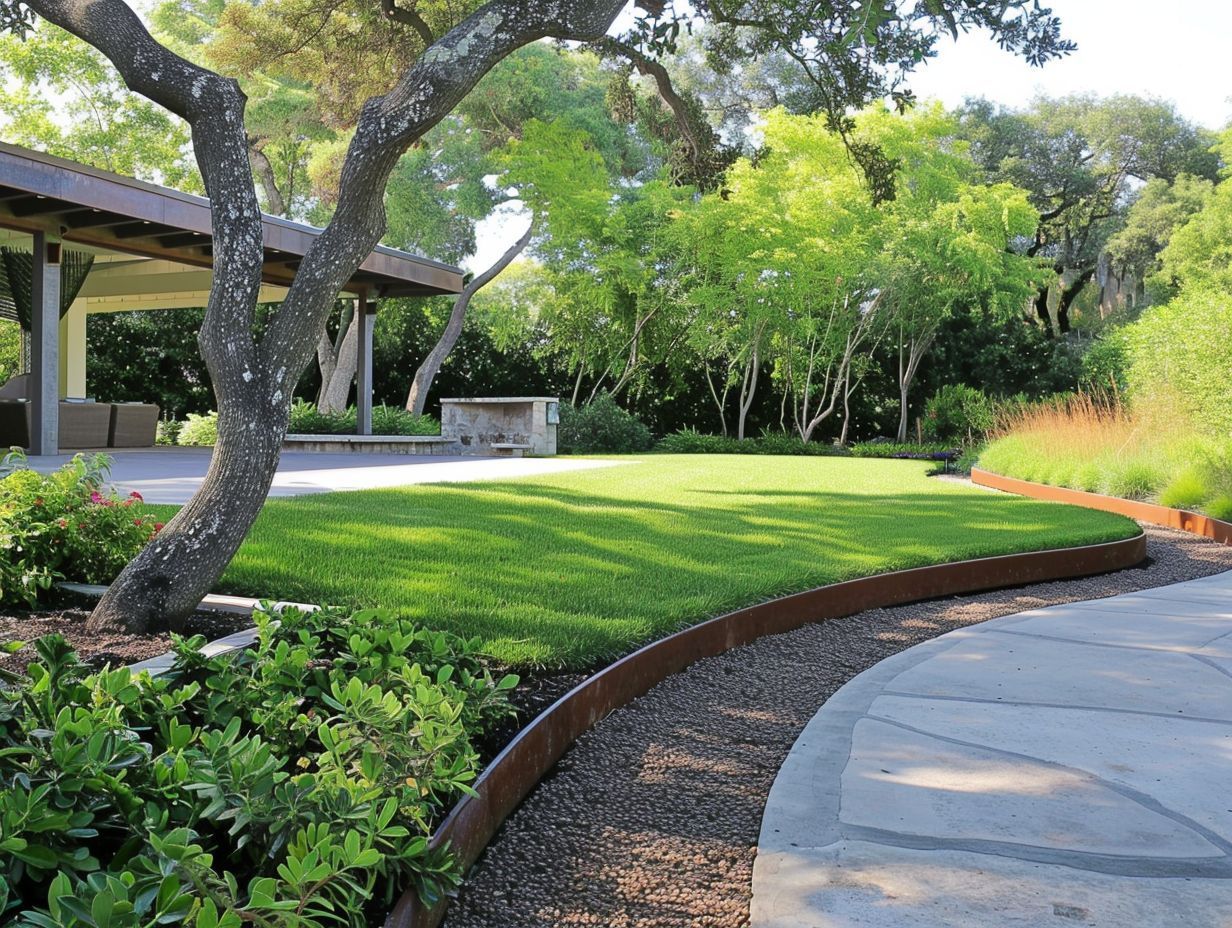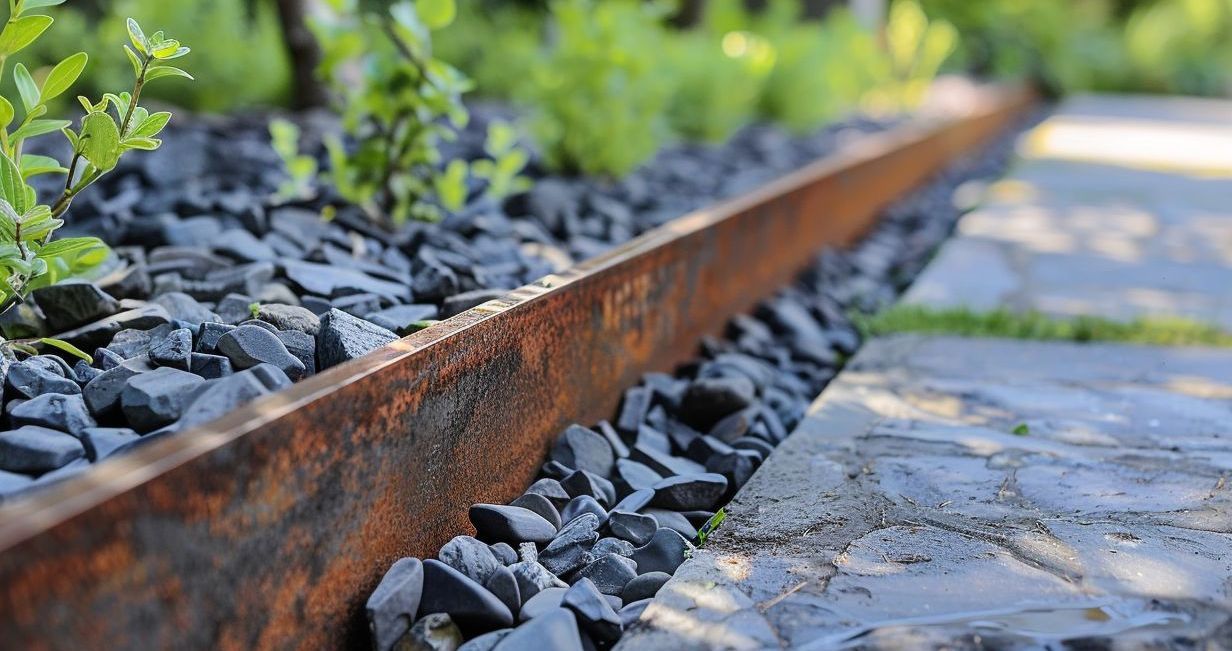Benefits of Using Steel Edging for Modern and Midcentury Modern Design
Every element is vital in achieving modern and midcentury design's desired aesthetic and functionality. One often overlooked yet essential component is steel edging. This versatile material has become increasingly popular among architects, landscape designers, and homeowners for its ability to blend form and function seamlessly .
Steel edging offers a sleek, minimalist look that complements the clean lines and geometric shapes characteristic of modern and midcentury modern design.
In this article, we'll explore the numerous benefits of using steel edging in these design styles, from its visual appeal to its practical advantages in interior and exterior applications.
Enhancing Aesthetic Appeal with Clean Lines
Steel edging perfectly matches the aesthetic principles of modern and midcentury modern design . Its crisp, clean lines create a sense of order and precision that aligns perfectly with these styles' emphasis on simplicity and functionality.
When used in landscaping, steel edging provides a sharp contrast between different elements, such as lawn and garden beds, or between hardscaping materials like gravel and concrete. This delineation looks visually striking and helps organize outdoor spaces in a way that feels intentional and designed.
In interior applications, steel edging can frame floors, create seamless transitions between different flooring materials, or even be a decorative element on walls or ceilings .
The sleek, reflective surface of steel edging catches light interestingly, adding depth and dimension to spaces. This subtle play of light and shadow can bring a sense of sophistication to
modern interiors without overwhelming the overall design scheme.

Durability and Longevity in Design
One of the most significant benefits of using steel edging in modern and midcentury modern design is its exceptional durability.
Steel is a robust material that can withstand various environmental conditions , making it ideal for indoor and outdoor use. In exterior applications, steel edging resists corrosion, rust, and damage from UV rays, ensuring that it maintains its appearance and structural integrity for years to come.
This longevity is vital in landscaping, where materials are constantly exposed to the elements and must stand up to wear and tear.
Steel edging's durability for interior use means it can handle high-traffic areas without showing signs of wear.
Steel edging, unlike softer materials that are readily dented, chipped, or scratched, retains its pristine appearance even in busy residences or commercial settings. This durability not only protects the design's visual integrity but also lowers the need for regular replacements or repairs, making steel edging a long-term cost-effective option.
Versatility in Application and Design
Steel edging's versatility is another key advantage that makes it an excellent choice for modern and midcentury modern design projects .
It can be used in various applications, from creating clean borders in landscaping to serving as a sleek trim in interior spaces. The material can be easily bent and shaped to follow curves or create geometric patterns, allowing designers to achieve complex designs without compromising the clean, minimalist aesthetic.
Steel edging can define garden beds, create raised planters, or separate
different landscaping elements in outdoor settings. Its flexibility allows for making straight lines and gentle curves, accommodating various garden designs. Indoors, steel edging can be incorporated into furniture design, used as a decorative element on walls, or as a unique material for custom light fixtures.
This adaptability makes steel edging a valuable tool for designers looking to add a modern touch to various aspects of a project while maintaining a cohesive look throughout.
Sustainability and Environmental Considerations
As sustainability becomes an increasingly important factor in design choices, steel edging is an environmentally friendly option.
Steel is one of the most recycled materials in the world , and many steel edging products are made from recycled content. Steel edging can be fully recycled at the end of its life cycle, contributing to a circular economy and reducing waste.
Moreover, steel edging's longevity means that it needs to be replaced less frequently than other materials, reducing the overall environmental impact of a design project.
In landscaping applications, steel edging can help conserve water by creating clear boundaries between planted areas and hardscaping, preventing water runoff and allowing for more efficient irrigation.
These
environmental benefits align well with the values of many modern and midcentury modern design enthusiasts, who often prioritize sustainable and eco-friendly choices in their projects.
Practical Benefits in Maintenance and Installation
Steel edging offers practical benefits beyond its aesthetic and environmental advantages, making it an attractive choice for modern and midcentury modern design projects.
The installation process for steel edging is relatively straightforward , especially when compared to more traditional materials like brick or concrete. This ease of installation can lead to reduced labor costs and shorter project timelines, which is particularly beneficial for large-scale landscaping projects.
Steel edging requires minimal maintenance , requiring little more than occasional cleaning to keep it looking its best. Unlike wood edging, which may rot or warp over time, or plastic edging, which can become brittle and crack, steel edging maintains its shape and appearance with minimal intervention.
This low-maintenance quality is especially appealing in modern design, where the focus is often on creating beautiful and functional spaces without excessive upkeep.
In landscaping applications, steel edging's rigidity helps to prevent soil erosion and keep mulch or gravel in place , reducing the need for frequent touch-ups or reapplication of materials. This not only saves time and resources but also helps maintain the crisp, clean look that is so essential to modern and midcentury modern outdoor spaces.
Steel edging has emerged as a versatile and valuable tool in modern and midcentury designers' arsenal. Its clean lines and sleek appearance perfectly complement the aesthetic principles of these design styles.

The Perfect Choice for Modern and Midcentury Design
As we seek innovative ways to create functional, beautiful, and sustainable spaces, steel edging stands out as a material that meets these diverse needs.
Whether used to define the clean lines of a modernist garden, create subtle transitions in an open-plan interior, or add a touch of industrial chic to a midcentury modern renovation, steel edging proves it's worth time and time again.
By embracing the benefits of steel edging, designers and homeowners can achieve stunning results that embody the essence of modern and midcentury design while ensuring longevity and practicality for years.










